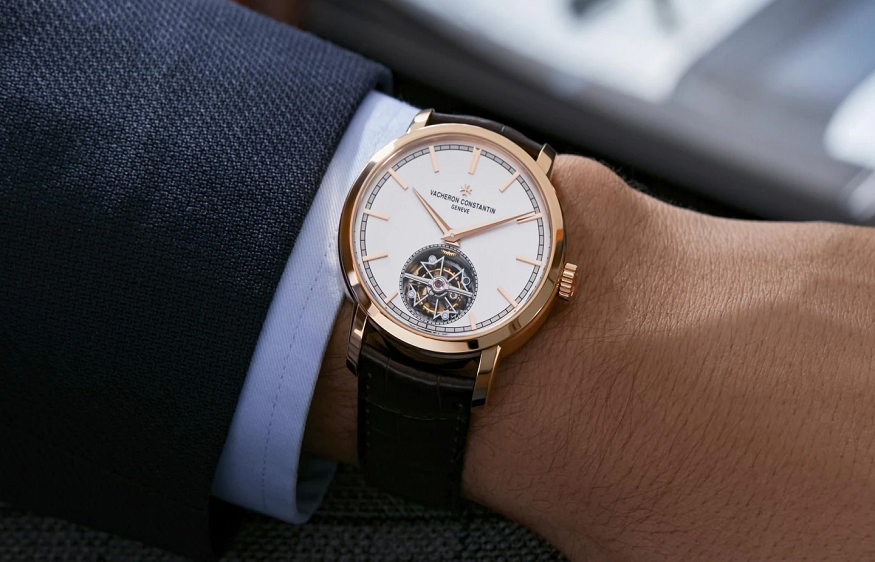After introducing you to the history of Rolex , the best-known watch brand, I thought it would be interesting to tackle the oldest watchmaking factory still in operation today. No, I’m not talking about Audemars Piguet or Patek Philippe but rather Vacheron Constantin. To retrace the steps of this prestigious brand, you have to go back to the middle of the 18th century, in Switzerland.
Reissue: the Vacheron Constantin “222” of 2022
JEAN-JACQUES VACHERON: A WATCHMAKING VOCATION
Jean-Marc Vacheron, the founder of what would become Vacheron Constantin, was born in Geneva in 1731. He is the son of Jean-Jacques Vacheron, a weaver by profession. His father being from the canton of Fribourg, he is considered as the son of an immigrant and does not benefit from the same rights in Geneva as other citizens. However, this in no way prevented this young 24-year-old master watchmaker from opening his own independent workshop in 1755. This date is known to us thanks to a document attesting to the recruitment of an apprentice that same year.
Jean-Marc Vacheron
first known Vacheron watch
A watch designed by JM-Vacheron
In the 18th century in Geneva, many craftsmen worked for La Fabrique, a term which designates all the professions of the jewelery and watchmaking industry. Watchmakers, sometimes called cabinotiers, work precisely in bright cabinets located on the top floors, visible to passers-by. The district of Saint-Gervais is the nerve center of the craftsmanship of the time. It is in this prosperous context that Jean-Marc Vacheron operates. The young man frequented the good society of Geneva and rubbed shoulders with the great minds of the Enlightenment such as Jean-Jacques Rousseau, whose grandfather was a watchmaker, and Voltaire, who would open his own watch factory in his Château de Ferney.
the cabinotiers table
The Cabinotiers in the 18th century, Christophe François von Ziegler (1879)
VACHERON CONSTANTIN DURING THE FRENCH REVOLUTION
Between the beginning of his career in 1755 and the end of it in 1785, Jean-Marc Vacheron developed watches with elaborate complications and developed the first guilloché dials. After more than 30 years of work, he passes the torch to his 25-year-old son, Abraham Vacheron, at the worst possible moment. Indeed, the French Revolution of 1789 disrupted the Swiss watchmaking economy, which was mainly based on the purchases of the French aristocracy. On the death of Robespierre, a counter-revolution took place, which pushed General Bonaparte’s troops to annex Geneva in 1798. It was in this troubled context that Abraham had to keep the workshop going. During his management, he developed the first Lépine-type watches, equipped with a winding stem at 12 o’clock. In 1810, he handed over the reins to his son Jacques-Barthélémi.
abraham vacheron
THE 19TH CENTURY: THE GOLDEN AGE OF MANUFACTURING
Because of the wars that are raging on European soil, trade is once again damaged. Most of the commercial relations that made Geneva stable are frozen. While the watchmaking workshops were closing one after the other, Jacques-Barthélémi used his Parisian contacts to maintain good commercial relations with France. He even went so far as to engage in the parallel trade of fabrics and brandy. In the meantime, he launched a series of 6 quarter-repeater watches, which strike every quarter hour. The fall of Napoleon in 1815 sounded the return of the prosperous days. Commercial links with France resumed and Vacheron Constantin set out to conquer the Italian market.
Jacques Barthelemi Vacheron
Vacheron women’s watch 1815
Magnificent ladies’ gold pocket watch – 1815
1819 is a key date since it marks the beginning of the collaboration between Vacheron and François Constantin, the son of a merchant born in Geneva and a brilliant businessman. A letter sent from Turin by Constantin the same year reveals the motto of the workshop: “Do better if possible, which is always possible”. From that day on, the company was renamed Vacheron Constantin.
francis constantin
During the following years, Abraham Constantin, François’ brother, took part in the adventure. As official painter of the court of France, he had access to the high nobility, which made him a significant asset for the trade. He rubs shoulders with princes and writers such as Stendhal. He creates many ornamental patterns for watch straps.

